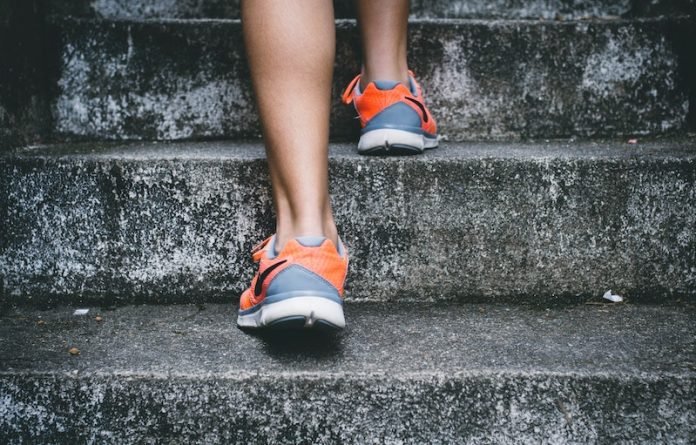
These days, there’s no shortage of information about the benefits of exercise, yet physical inactivity is the fastest-growing public health problem in the United States
In fact, nearly half of all U.S. adults do not meet the recommended daily allowance for physical activity, and nearly one-third report doing less than 10 minutes of moderate-to-vigorous physical activity per week.
Yet, studies show that as little as 20 minutes of moderate-intensity activity each day can help keep you healthy, including lowering your risk of cardiovascular disease, stroke, and cancer, among other benefits.
These studies support the premise behind “Exercise Is Medicine,” an initiative of the American College of Sports Medicine based on a concept that has existed since ancient civilization.
Throughout the centuries, many more health professionals have upheld the belief that exercise is medicine.
Kristen Schuyten, D.P.T., a physical therapy clinical specialist at the University of Michigan Health MedSport, is one of them.
Weighing the benefits
According to the Exercise Is Medicine organization, regular physical activity can:
- Reduce mortality and the risk of recurrent breast cancer by approximately 50%
- Lower the risk of colon cancer by over 60%
- Reduce the risk of developing of Alzheimer’s disease by approximately 40%
- Reduce the incidence of heart disease and high blood pressure by approximately 40%
- Lower the risk of stroke by 27%
- Lower the risk of developing type II diabetes by 58%
But, exercise looks different to everyone, from those wanting to begin a safe exercise program to competitive athletes and performing artists (think dancers, figure skaters, and gymnasts) who want to keep functioning at a high level.
Movement is power
Physical activity is considered any type of activity that involves moving the body such as housework, stair climbing, or gardening.
Exercise is a type of structured movement focused on cardio or aerobic activity that gets you breathing hard and your heart beating fast. This includes things such as running, brisk walking, biking, hiking, and swimming, along with strength training.
Making a plan
- Low impact. For the average individual just starting out, Schuyten recommends low-impact activities such as an elliptical machine, hiking or walking 2 to 3 times a week.
Then, increase cardio and light strength training activities slowly to make sure your body can tolerate it.
- Strength training. “Light strength training can start with lifting your own body weight, including squats, lunges, and core activities, every other day,” said Schuyten.
“These tend to be good first steps. Then, work up to adding light weights (2 or 3 lbs.) or exercise bands that are easy on the joints. Use your off day to assess how your body handles the activity and make adjustments as needed.”
- Cardio. Running, cycling, stair climbing or any activity that challenges your heart and lungs can be done on a daily basis, says Schuyten, who warns against “fad exercises” that require considerable impact or quick, sudden movements.
- Stretching. Schuyten and her team stress the importance of stretching, which often gets ignored by both new and experienced athletes.
Avoiding injury
Even avid athletes and performing artists are at risk of injury, says Schuyten. As the MedSport Performing Arts Rehabilitation Coordinator, many of her patients are active, but not always activate the right muscles to perform high-level activities.
“This is where adding different exercises — outside of your normal movement patterns — can help, but performing with proper body mechanics is key, as well,” said Schuyten.
“Your form may need work, or if you have a past injury that was not fully resolved and you get back to activity, even low activity, your previous symptoms may return.”
Professionals play a critical role
Schuyten promotes seeing a primary care physician, and strengthening professional or physical therapist to make sure you’re on the right path.
“We work with patients who may have areas of tightness, for example, in their neck, low back or hamstrings, that need to be addressed before getting into a full exercise program.”
Listen to your body
The MedSport team tracks patient progress, including how their strength, tolerance, and motion are improving. “
It helps to motivate them,” Schuyten said. Once rehab is complete, patients are encouraged to continue tracking their progress. “Whether they use a smartwatch or pencil and paper, it gives them motivation to continue therapy and to keep pushing toward their goals.”
Schuyten says the overall goal at MedSport is to help patients manage their therapy so they’re able to continue good practices on their own.
“We give patients the tools to be able to self-treat and to have more body awareness so they understand any symptoms they may experience. We want to get them on a path to be their own advocate and to know what their body needs. And, if necessary, to get treatment.”
For first-time athletes and beyond, Schuyten wants one important message to be clear:
“Listen to your body and what it is able to tolerate.
If you need a rest day, take one, knowing that rest and recovery are necessary for this process. A little R&R goes a long way in easing you back into exercise and making it a permanent part of your lifestyle.”
Written by Jane Racey Gleeson.
If you care about wellness, please read studies about walking exercise that could keep older people fit and health, and no pain, no gain in exercise for this common artery disease.
For more information about wellness, please see recent studies about the key to improving people’s longevity, and results showing how to use exercise to prevent and treat high blood pressure.



